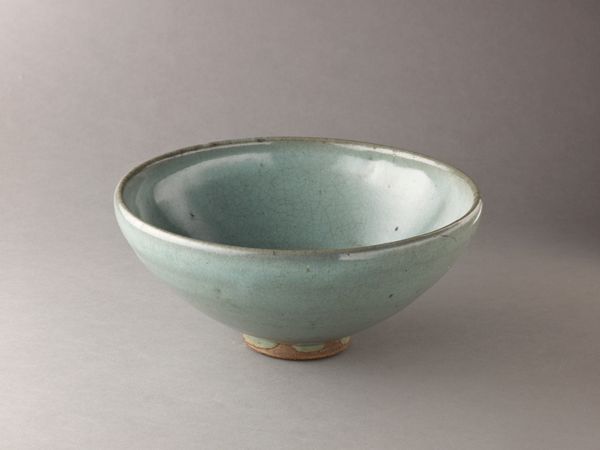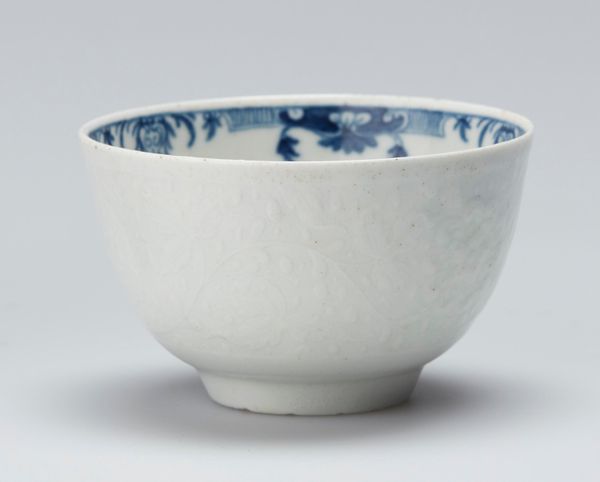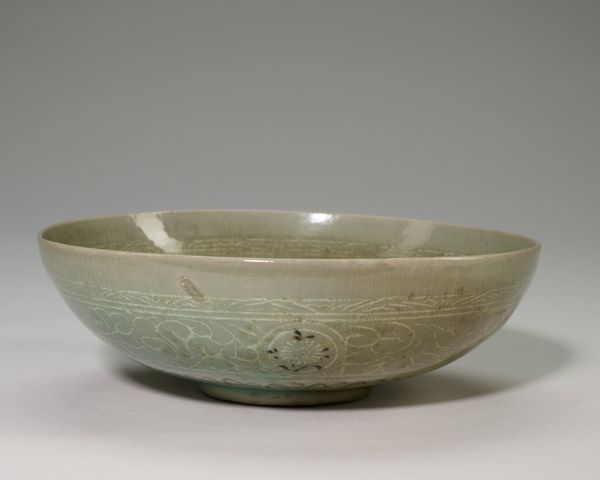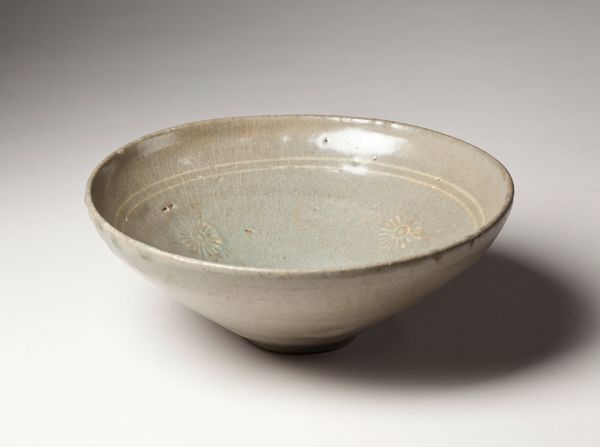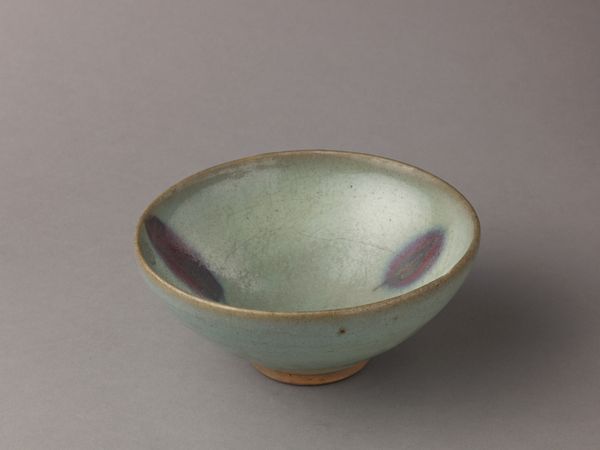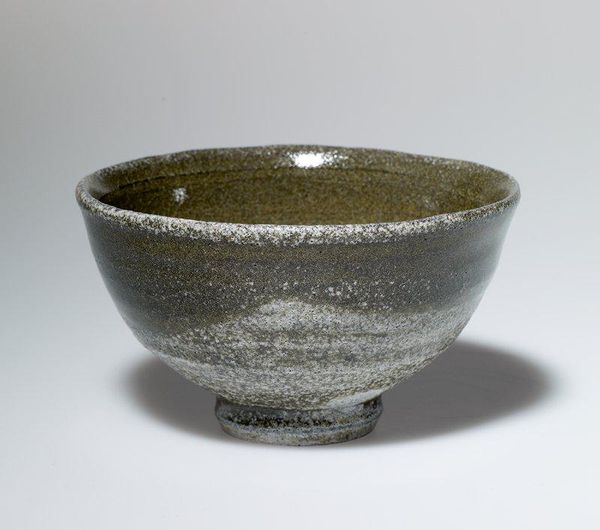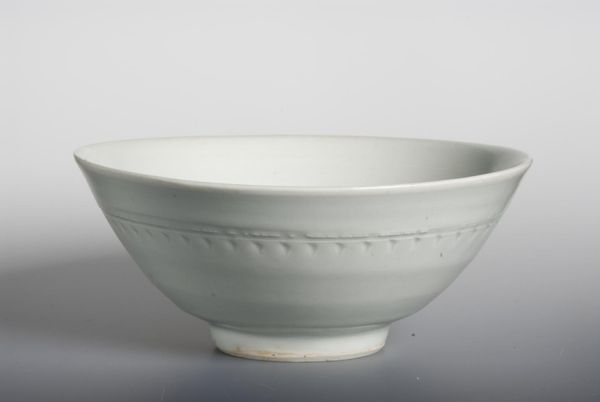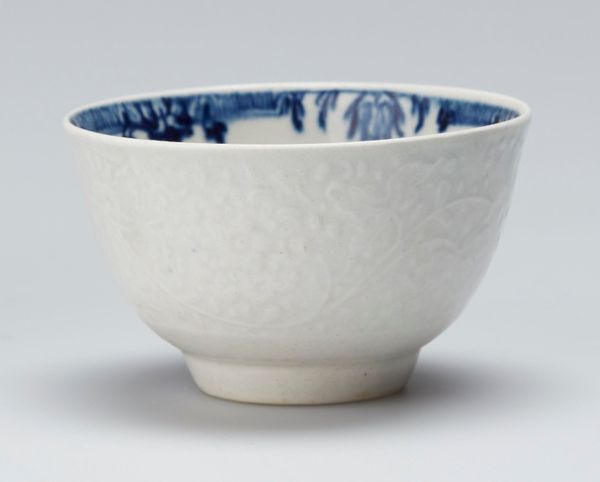
ceramic, earthenware
#
medieval
#
asian-art
#
ceramic
#
form
#
earthenware
#
stoneware
#
ceramic
#
decorative-art
Dimensions: 2 1/2 x 7 in. (6.35 x 17.78 cm)
Copyright: Public Domain
Editor: Here we have an earthenware bowl, dating from the 12th to 13th century. Its subdued coloration and gently curved form evoke a sense of stillness and calm. How would you interpret this piece based on its intrinsic visual qualities? Curator: Certainly. Note the subtle gradations of celadon glaze, almost imperceptible yet vital to the object's overall presence. The precise geometry of the bowl, adhering to a strict circularity, dictates the visual experience. Consider how the interior's incised decoration plays with light and shadow, creating depth and texture within a confined space. Are you noticing a contrast in surface treatment, perhaps indicating differing kiln conditions during firing? Editor: Yes, now that you mention it, there is a distinct contrast between the smooth glaze inside and the slightly rougher exterior. Is this variance in texture simply a result of the firing process, or might there be another artistic intention? Curator: An interesting point! The variance can be understood as an intentional contrast between the inner and outer worlds of the piece. One speaks of refinement, and the other grounded materiality. Consider how the base, though small, anchors the object, providing a focal point to resolve the curving form. Ultimately, the bowl transcends mere utility. Editor: It's fascinating how the analysis of its pure form reveals such complexity! I didn't expect so much information could be gleaned from simply looking at it so closely. Curator: Precisely! By rigorously examining an object's structure, color, and materiality, we can arrive at profound understandings. I trust this encounter has refined your lens for future encounters with ceramic works.
Comments
No comments
Be the first to comment and join the conversation on the ultimate creative platform.
